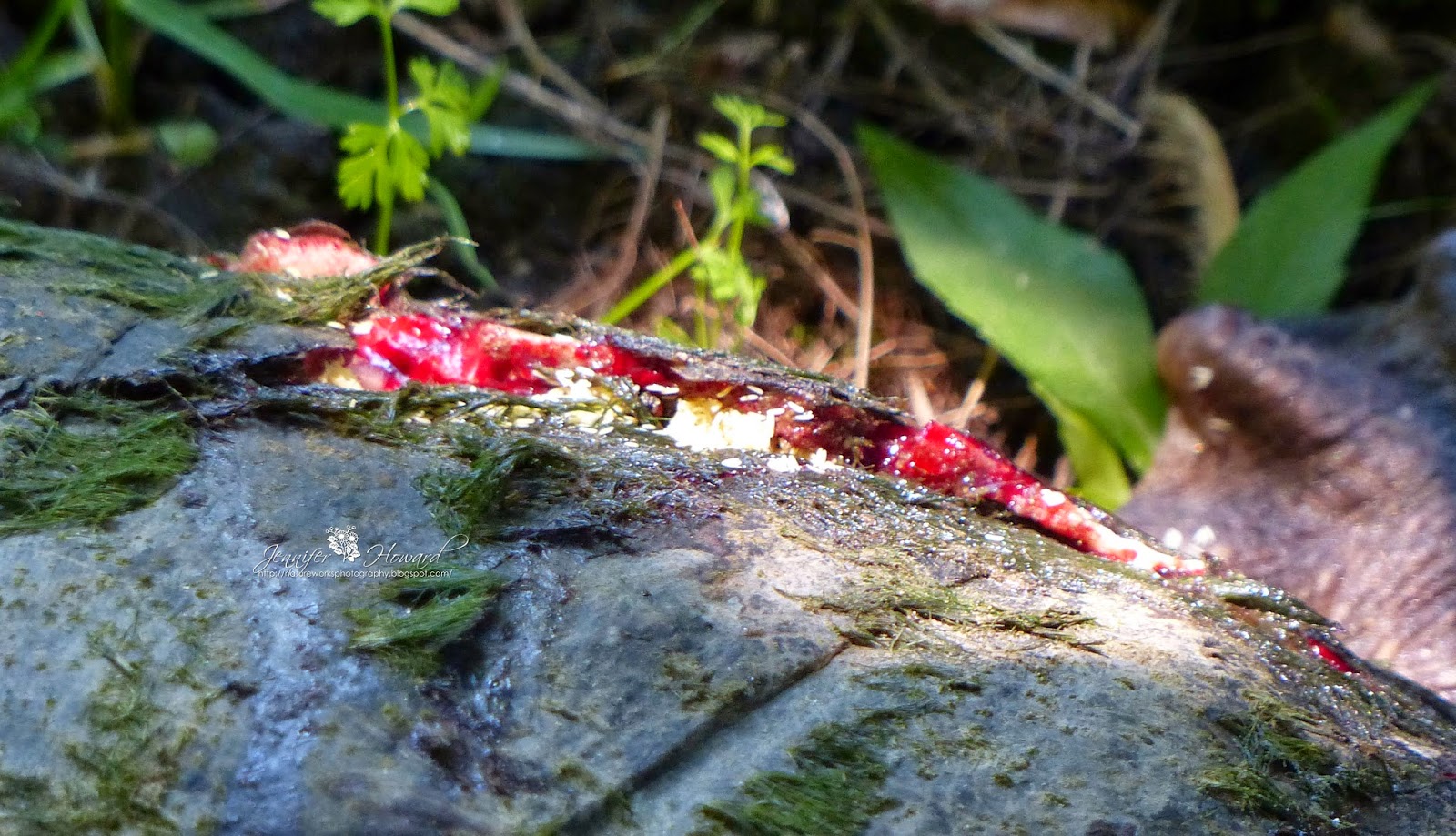Meet Myrtle the turtle. She is a snapper who is approximately 70 years old give or take. Myrtle is a female who was on route to lay her eggs. Crossing the road she was hit by a car. It has been proven that some people actually hit turtles and snakes purposely. The hate of snappers can be great in some. They have a very bad rap. But in actual fact. Snapping turtles will not chase you in the water or bite your toes off. They live on mostly vegetation on the bottom of were they live. Yes they can take a tiny duckling for example. Or a leg off a gull. Which by the way survive fine. However. Also do pike or other large fish. It is a world of the survival to live. And not all make it. Taking away goslings for example. Is taking away food for another species. That's why so many are born. Mother nature keeps itself in balance if humans would let her. So Myrtle after being hit made her way to the tall grasses of Tiny Marsh were we are conducting a biological survey. Focusing this year on turtles. While looking for dragonflies a couple members of the group came across this injured snapper. Lying there were she could go no further,hurt,in pain and scared. Yes they get scared too. We sprung into action . Called Kawartha Turtle Trauma Center and started the task of getting this turtle to help. Another turtle was awaiting a ride to the hospital as well. So a turtle taxi was set up.And we were under way. It is quite the system that works. KTTC is located in Peterborough. Turtles are given a number as seen here in a photo below. This one was #244 to be admitted,a snapper,and the year 2014. When she arrived at the center she was given pain medication,assessed,wounds flushed and since this wound was open for a while it had bot flies lay their eggs in the wound. Those had to be carefully picked out one at a time by the volunteer staff there. All bandaged up and checked and bandages changed daily. After stable. x-rayed to find her to be a female with 19 eggs. Coaxed to lay some eggs on her own then the rest induced. She successfully laid her 19 eggs which are still in incubation at the hospital. 2 months later she was ready to come home. A turtle has nothing to do with her young. After many hours of hard work and labor,the turtle lays her eggs from 4 to 42 depending on the size and type of turtle it is. So Myrtle will never see her young.And if a female turtle gets killed it will take 100 years to replace that life lost. They are 12 - 20 years old again depending on type of turtle before they are old enough to breed. So helping a turtle across the road for instance the way it is going carefully. YOUR SAFETY FIRST. Is absolutely crucial to their survival. So Myrtle came home 2 months later and was greeted by a news crew from CTV to film her exiting journey back home. And she knew right were to go. She was a star that day and knew nothing about all that. Just that she was home. And she will lay more precious eggs next year. And hopefully many years to come. Doing this turtle survey has been so rewarding. When you see that first little head coming out of an exit hole. All the hours and hard work are all worth while.


Injured female snapper
The white in this wound are eggs laid by flies.Had to picked out one by one by staff at KTTC
Putting her into a container for safe transport.
Her arrival back home after 2 months of rehab.
Am I really home!!! Myrtle blinks her eyes in the bright sunshine.
Look at that pretty face. Almost looks like she is smiling.
Information that each turtle gets upon arrival at the turtle hospital.
CTV camera woman getting right down to Myrtles level to get the release. Myrtle is heading for the marsh.
Wound healed.
Last look before the release.
The release.




















































